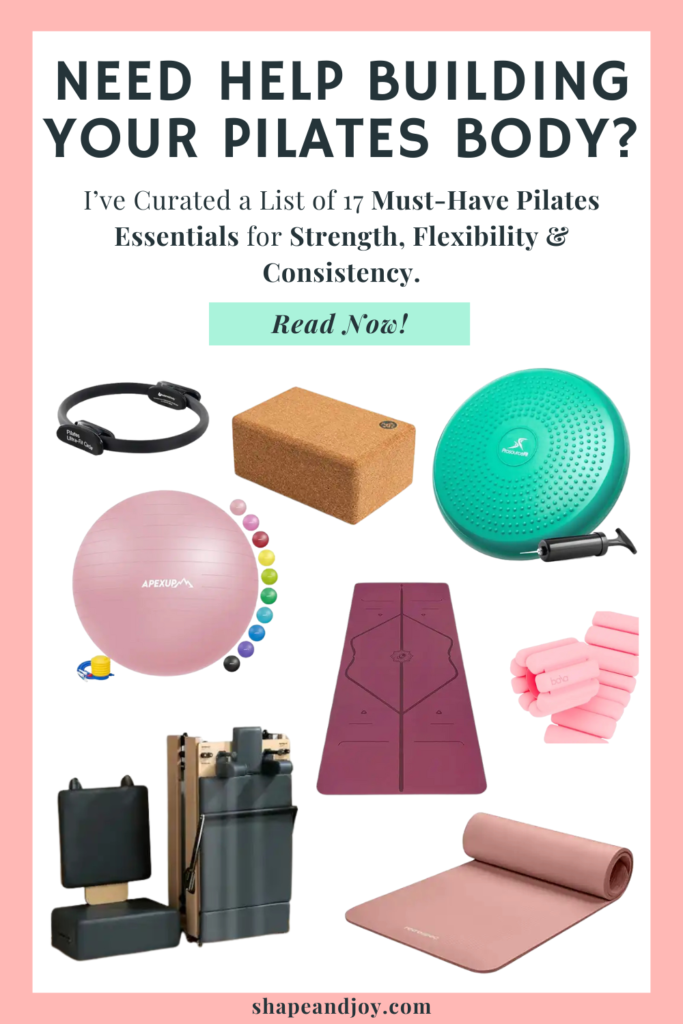This post may contain affiliate links, which means that I may earn a commission if you click on the link or make a purchase using the link. When you make a purchase, the price you pay will be the same whether you use the affiliate link or go directly to the vendor’s website using a non-affiliate link.
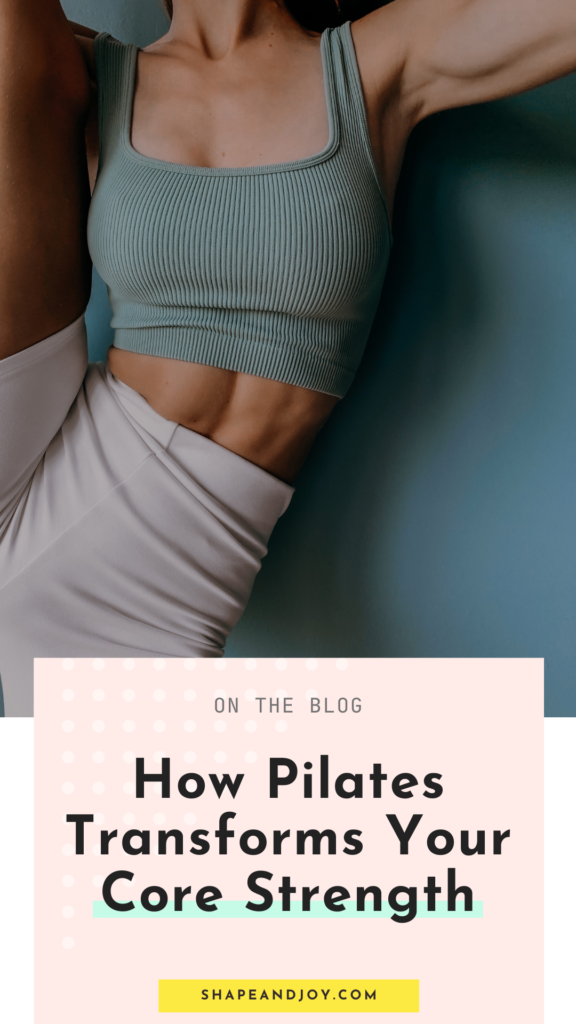
In the last post, we weighed the pros and cons of Pilates vs. yoga (Check that out here). If you’ve decided to stick with Pilates (great choice, by the way!), then you’re about to unlock its best-kept secret: core strength.
Yep, those precise movements and controlled breathing are about to work wonders on your middle, giving you a strong, stable foundation for everything you do—whether that’s carrying shopping bags, sitting at your desk with better posture, or finally nailing that Pilates roll-up without wobbling.
So, in this post, we’ll explore:
- What core strength actually is (spoiler: it’s more than just abs).
- How Pilates builds your core like a pro.
- The real-life perks of a stronger core.
- What results you can expect over time.
Ready to feel the burn (and love it)? Let’s dive in.
What is Core Strength?
When we talk about the core, it’s not just about getting six-pack abs (although that’s a nice bonus). Your core is the powerhouse of your body, made up of multiple muscles that support your spine, stabilise your body, and keep you moving efficiently.
Key core muscles include:
- The rectus abdominis – The one responsible for that “six-pack” look.
- The transverse abdominis – A deep core muscle that acts like a built-in corset, keeping everything tight and stable.
- The obliques – The muscles that help with twisting and side-bending movements.
- The erector spinae – These run along your spine and play a huge role in posture and back support.
A strong core isn’t just for show—it improves balance, enhances posture, and reduces the risk of injury. Think of it as your body’s internal scaffolding, helping with everything from lifting groceries to smashing your Pilates workouts with ease.
How Pilates Builds Core Strength
Pilates doesn’t just target your core—it makes it the star of the show.
- Deep Engagement: Each move focuses on activating your deep abdominal muscles.
- Controlled Movements: No rushing here! The slow, deliberate pace ensures you’re working your core with precision.
- Variety of Exercises: From classics like The Hundred to planks and pelvic curls, Pilates serves up plenty of core-centric challenges.
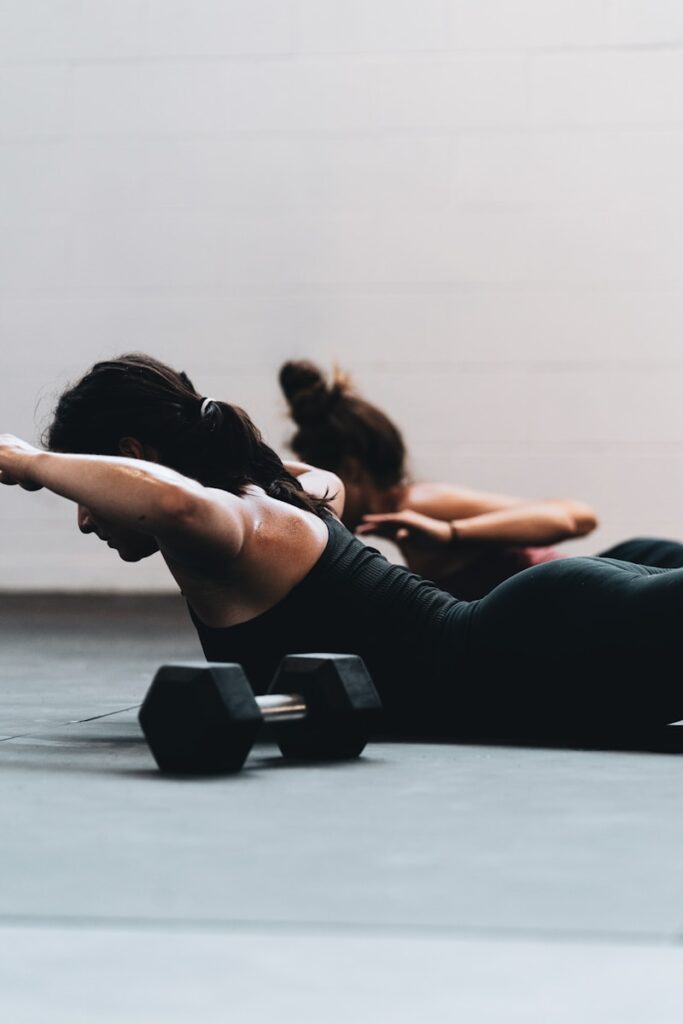
Two core-focused exercises to try:
- The Hundred:
- Lie on your back with legs in tabletop position.
- Lift your head and shoulders, extend your arms, and pulse them up and down.
- Inhale for 5 pulses, exhale for 5, repeating until you reach 100.
- Plank:
- Get into a push-up position, hands under shoulders, body in a straight line.
- Hold for 20–30 seconds, focusing on engaging your core.
Pro Tip: Always think about pulling your belly button towards your spine. It’s the secret sauce for that deep burn.
📌 Pin this for later! ⬇
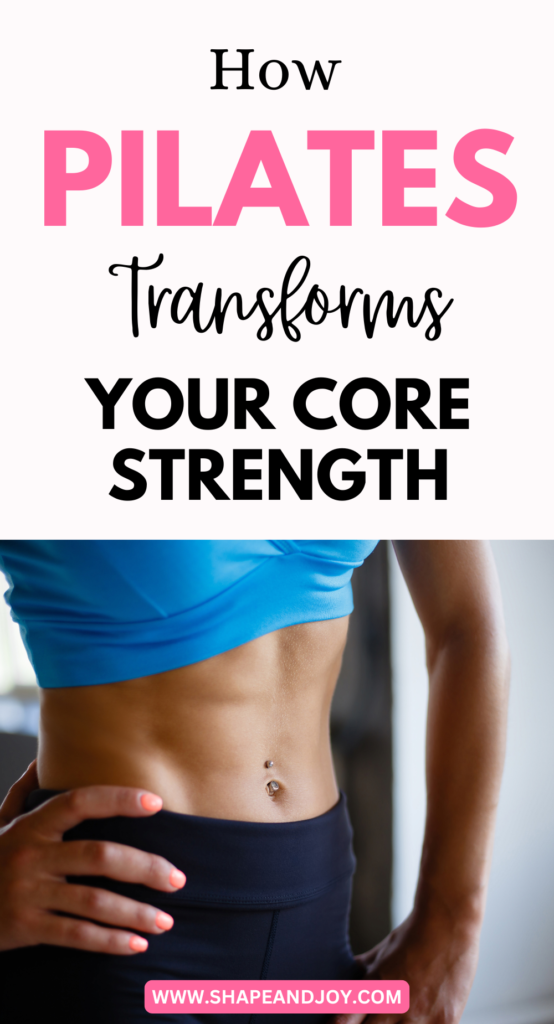
Everyday Benefits of a Strong Core
The benefits of a strong core go beyond your mat:
- Reduced Back Pain: Say goodbye to those nagging aches. A strong core supports your spine, taking pressure off your lower back.
- Better Posture: No more slouching! Pilates helps you stand taller and look more confident.
- Improved Balance: Whether you’re walking on uneven ground or trying wall Pilates exercises, a strong core keeps you steady.
- Functional Fitness: From bending to pick up your toddler to reaching for the top shelf, core strength makes daily tasks easier.
Results You Can Expect Over Time
Consistency is key, but here’s what you can look forward to:
- Week 1–2 – Expect some wobbling—your muscles are waking up and figuring out how to activate properly.
- Week 3–4 – You’ll notice better control during movements like roll-ups or planks, and daily activities may start to feel easier.
- Month 2+ – Improved posture, reduced back pain, and a noticeable boost in core strength. You may even feel stronger in other workouts, too.
- Long-Term – A rock-solid foundation that enhances everything from Pilates and strength training to simply moving better in everyday life.
💡 Pro Tip: Track your progress by jotting down how your body feels after each session or taking occasional photos. The little wins add up fast!
More Pilates Tips & Workouts You’ll Love
Ready to take your Pilates journey to the next level? Check out these must-read posts for beginner-friendly workouts, expert tips, and game-changing Pilates advice to help you build strength, improve flexibility, and stay consistent!
- Ultimate 4-Week Wall Pilates Challenge For Beginner’s
- Pilates 101: The Ultimate Workout to Transform Your Life
- How to Start Pilates at Home: A Beginner’s Guide
- 5 Common Pilates Mistakes Beginners Make (and How to Avoid Them)
- 10 Easy Pilates Poses for Beginners to Master Today
- Pilates vs Yoga: Which One is Right for You?
- How Pilates Transforms Your Core Strength
- 16 Mental Health Benefits of Pilates (That’ll Have You Rolling Out Your Mat ASAP)
- Can Pilates Help You Lose Weight? Here’s What You Need to Know
- The Ultimate Pilates Kit: 17 Must-Have Products to Take Your Workouts to the Next Level
Conclusion
Pilates transforms your core strength through mindful movement, controlled exercises, and consistent practice.
It’s not just about looking good (though the results don’t hurt!); it’s about building a strong, stable body that supports you in every way—whether you’re flowing through a Pilates class, chasing after kids, or just sitting comfortably without aches and pains.
So, keep showing up, keep engaging that core, and enjoy the journey.
Your future self will thank you.
📌 Pin this for later! ⬇
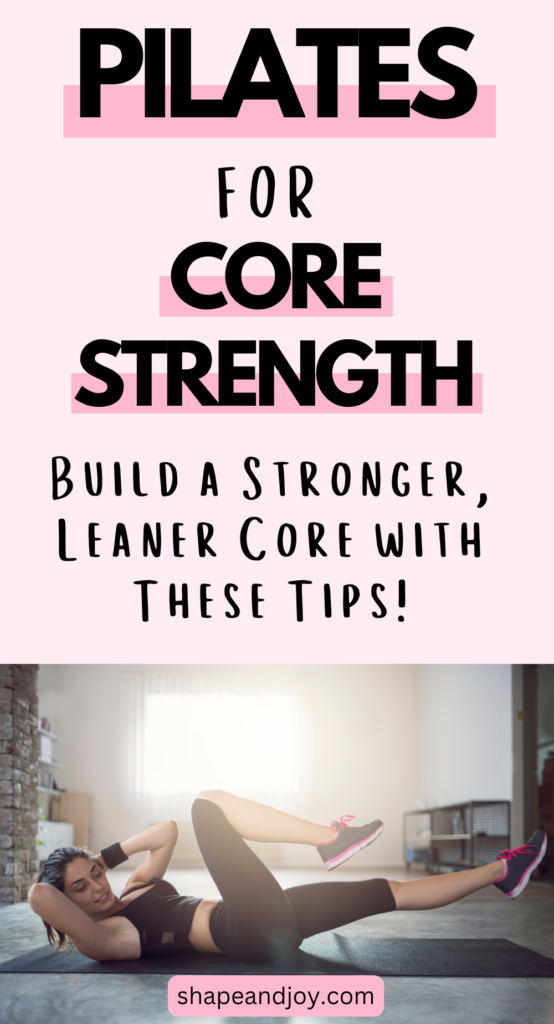
Studies
- Core stability is essential for maintaining functional movement and preventing injury. Pilates is particularly effective in engaging deep core muscles, such as the transverse abdominis, which acts like a built-in corset to stabilise the spine (Joyce & Kotler, 2017).
- Pilates exercises improve core activation and strength, particularly benefiting those with musculoskeletal conditions (Cuddy & Gaskell, 2019).
- Research shows that Pilates helps improve core muscle activation and supports spinal stability. It is particularly effective in engaging abdominal and back muscles through controlled movements (Franks, Thwaites, & Morris, 2023).
- A 12-week Pilates intervention led to improvements in core stability, though effects on flexibility and body composition were limited (Pumpa et al., 2015).
- Reduced Back Pain: Studies indicate that Pilates is effective in reducing chronic low back pain by strengthening core muscles and improving postural control (Franks, Thwaites, & Morris, 2023).
- Better Posture: Pilates training has been linked to improved postural control and stability, particularly in older adults, making it a great addition to fitness routines (Smith & Smith, 2005).
- Improved Balance: Pilates-based training enhances core stability and balance, making everyday activities easier and reducing fall risk (Thakkar et al., 2021).
- Short-Term Gains: A four-week Pilates programme improved core strength and flexibility, even though body composition remained unchanged (Raghavendra, 2018).
- Long-Term Benefits: Regular Pilates practice leads to significant improvements in core muscle strength, postural stability, and movement control, particularly in populations such as dancers and athletes (Wang, 2023).

